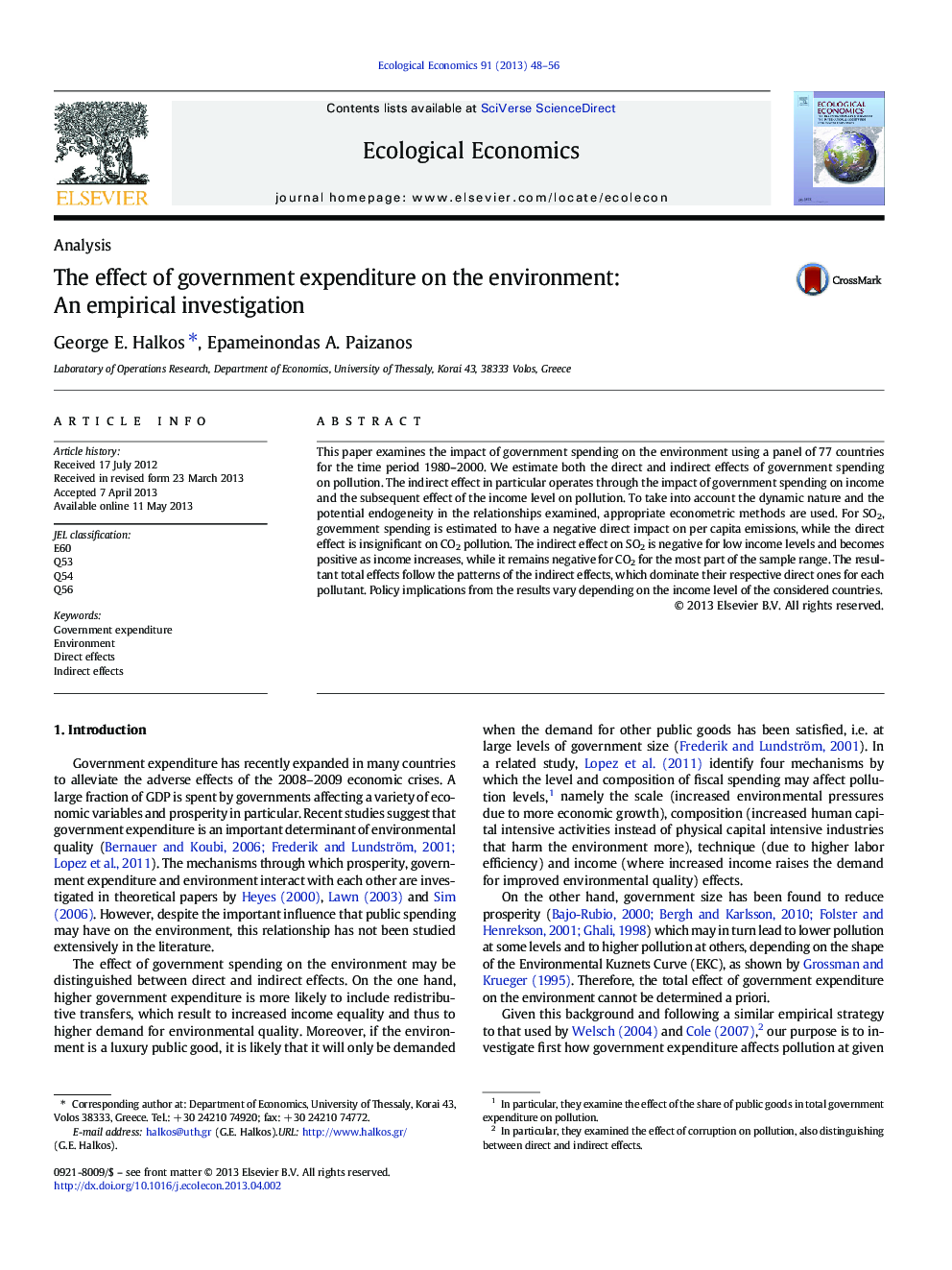| کد مقاله | کد نشریه | سال انتشار | مقاله انگلیسی | نسخه تمام متن |
|---|---|---|---|---|
| 5049873 | 1476388 | 2013 | 9 صفحه PDF | دانلود رایگان |
- We examine direct, indirect, and total effects of government expenditure on pollutants.
- The dynamic nature of the relationships and potential endogeneity are considered.
- We find negative and significant direct effect of government expenditure on SO2.
- Indirect effects depend on income and determine the shape of the total effects.
- Policy implications differ among pollutants and according to income levels.
This paper examines the impact of government spending on the environment using a panel of 77 countries for the time period 1980-2000. We estimate both the direct and indirect effects of government spending on pollution. The indirect effect in particular operates through the impact of government spending on income and the subsequent effect of the income level on pollution. To take into account the dynamic nature and the potential endogeneity in the relationships examined, appropriate econometric methods are used. For SO2, government spending is estimated to have a negative direct impact on per capita emissions, while the direct effect is insignificant on CO2 pollution. The indirect effect on SO2 is negative for low income levels and becomes positive as income increases, while it remains negative for CO2 for the most part of the sample range. The resultant total effects follow the patterns of the indirect effects, which dominate their respective direct ones for each pollutant. Policy implications from the results vary depending on the income level of the considered countries.
Journal: Ecological Economics - Volume 91, July 2013, Pages 48-56
